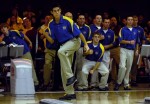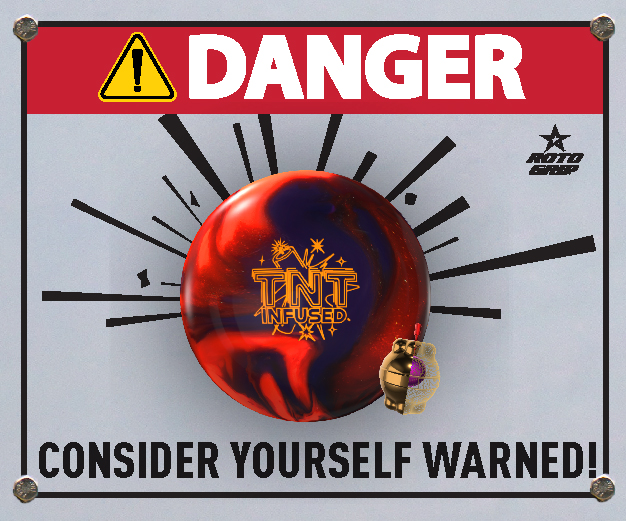The Growing Pains of Highs School Bowling
By Tom Domzalski
 As high school bowling is one of the fastest growing sports in the country, it stands to reason that all bowling’s stakeholders should support the development of their local high school teams and youth feeder programs. Let’s face the facts…encouraging youth participation in our sport is the only way to grow and sustain the game we love.
As high school bowling is one of the fastest growing sports in the country, it stands to reason that all bowling’s stakeholders should support the development of their local high school teams and youth feeder programs. Let’s face the facts…encouraging youth participation in our sport is the only way to grow and sustain the game we love.
Unfortunately, as bowling has become recognized by state athletic associations, a number of stumbling blocks have arose that must be rectified before irreparable damage to the sport is done. Case in point: the Ohio High School Athletic Association (OHSAA) and their skewed bylaws.
As OHSAA had no playing rules for bowling when the sport was petitioned to be recognized as a varsity letter program, a rules committee of non-bowlers looked to the bylaws of the adult organization, the USBC, as a model. With no working knowledge or experience regarding the finer points of bowling, the OHSAA rules committee on bowling wrote the following into their bylaws: “The use of foreign substances applied to bowling balls, bowling shoes, towels, or the use of items that emit a foreign substance, including powder, are prohibited” (Rule 1.93).
Given that OHSAA is comprised of non-bowlers whose primary concern as a governing body is maintaining the integrity of the sport and the safety of the participating student athletes, rule 1.93 echoes two distinct passages from the USBC rule book: rule 12 on approach surfaces and question 3 of the CAQ section in chapter 7 on altering ball surfaces.
USBC Rule 12 reads, “The application of any foreign substance on any part of the approach that detracts from the possibility of other players having normal conditions is prohibited. This includes…talcum powder.” The CAQ passage on altering the surface of the ball reads, “Rosin and powder are considered foreign substances and must be wiped off completely before making a delivery.”
In reading these two passages from the USBC, the inexperience and ignorance of the OHSAA governing body shines bright. The intent of USBC rule 12 is to guarantee the physical safety of the bowler and maintain a consistent playing surface. Excessive amount of any powdery substance, be it an aid or hindrance to sliding, is a clear violation of the rules. The CAQ passage, on the other hand, addresses the alteration of the surface of the bowling ball such that no competitive advantage can be gained in said application once league or tournament play begins. In short, these are two passages addressing two distinctly different points of order whose only common strain is their wording. And any person of knowledge in the bowling industry would recognize this point.
Instead, high school bowlers across the state of Ohio are prohibited from using Easy Slide, rosin bags, hand conditioners, and the like–staples in any well-prepared bowler’s equipment bag–on the grounds that they “emit a foreign substance.” OHSAA’s ignorance of the finer points of this sport is only overshadowed by the arrogance they demonstrate in not adopting proposed rule changes from industry leaders.
Instead, OHSAA comprised with the contradiction of a lifetime. Bowlers are permitted to use grip sacks and puff balls on the grounds that these items do not produce a powdery or foreign substance!
So when OHSAA representatives applaud the efforts of high school bowlers as they are asked to bowl 3 team games and 10 Baker games or more during state sanctioned tournament play in a cramped bowling center with insufficient environmental conditions, remember that a little powder on a swollen and sweaty thumb to clear the ball is strictly forbidden.
Works Consulted
http://www.ohsaa.org/sports/rglts/11-12BWreg.pdf
http://usbcongress.http.internapcdn.net/usbcongress/bowl/rules/pdfs/2011-2012PlayingRules.pdf
















Might as well Howl at the Moon
I know Tom. He is an articulate person who clearly loves the game and here enjoys exaggerating the facts behind his opinions.
In this case, it’s hard for me to get past words like “irreparable damage”, “arrogance”, “skewed”, “inexperience and ignorance”. If Tom had been involved with the formation of Ohio’s high school program he would know how diligent the OHSAA was in it’s efforts to see that they presented Bowling to their student athletes in it’s purest format. To rant and taunt the OHSAA about an issue that even the vaunted USBC has hardly resolved is, well—ignorant.
A frustrating rule, yes it is; but Tom is not in a league meeting and sensational diatribes won’t improve anything. There is an effective process for making changes to OHSAA’s playing rules—use it.
Thank you for the comments. I am all for people commenting on the articles posted on the website, as long as it is a constructive criticism and void of personal attacks. I would welcome an article addressing Tom’s concerns.